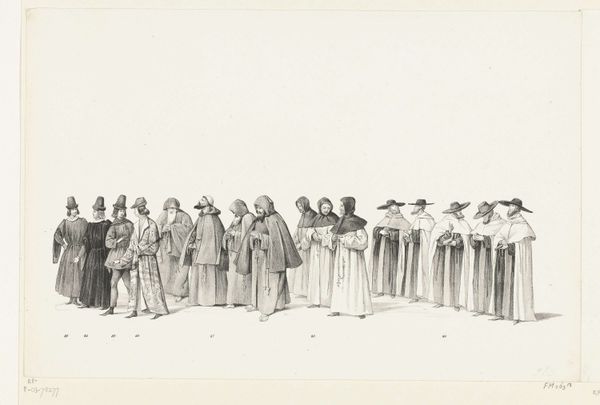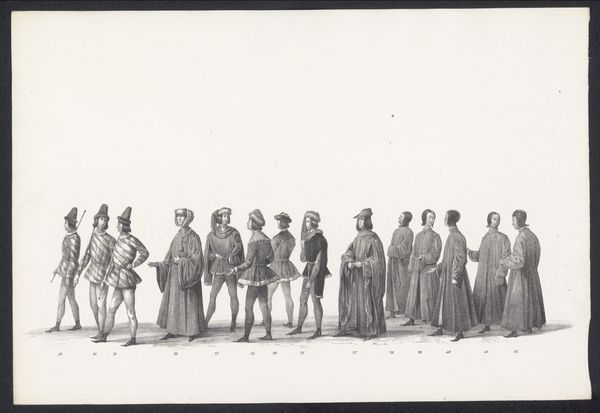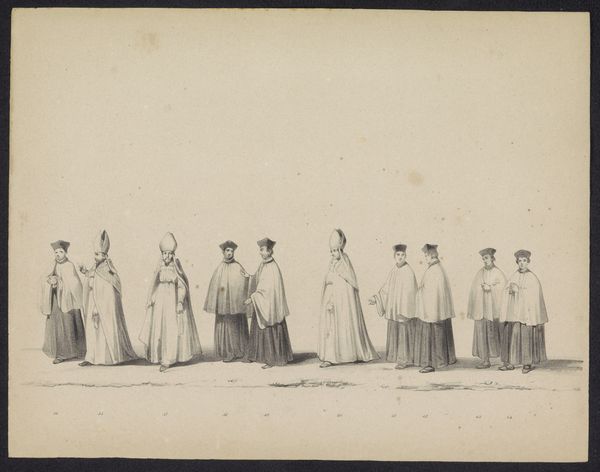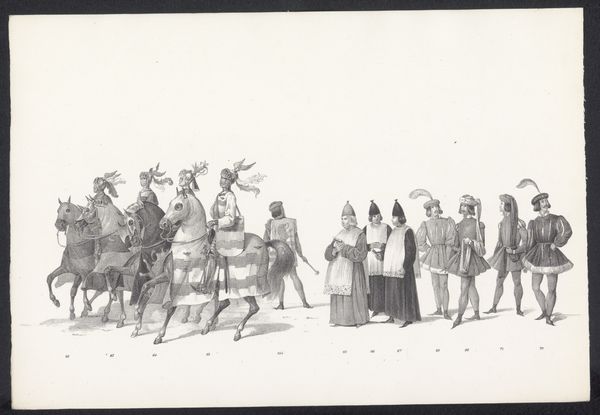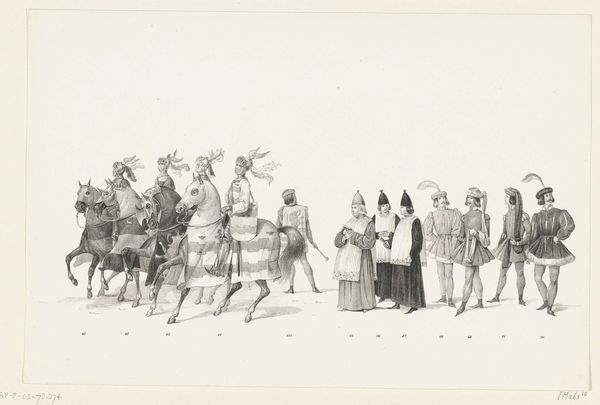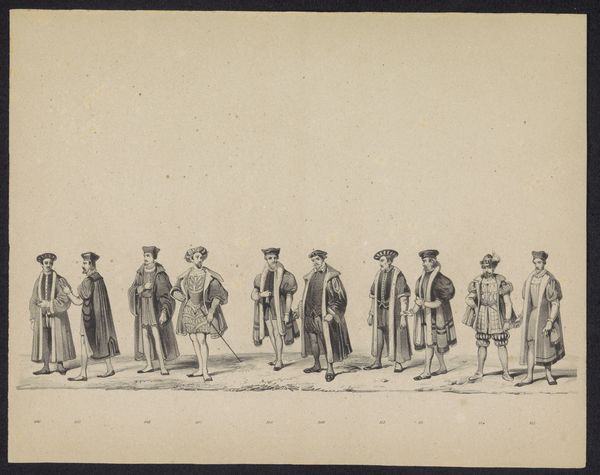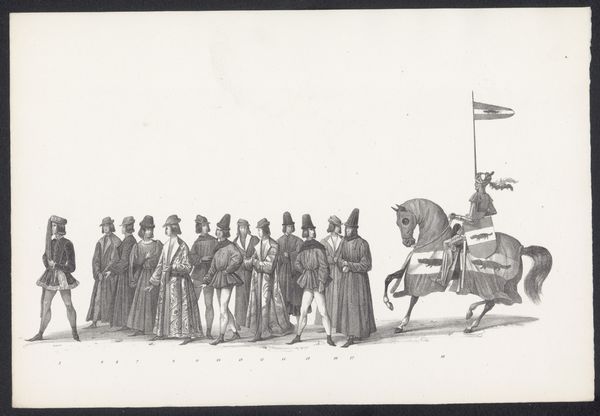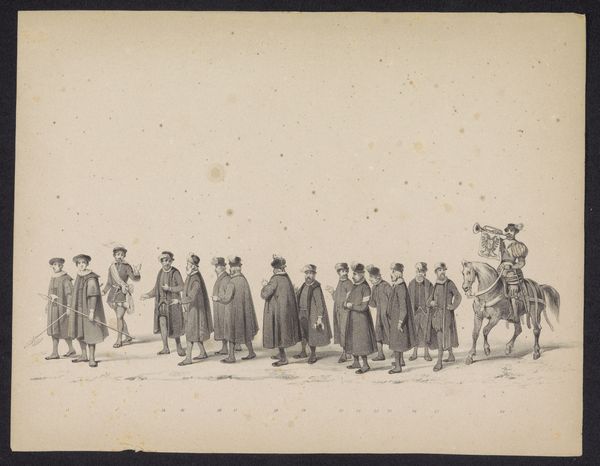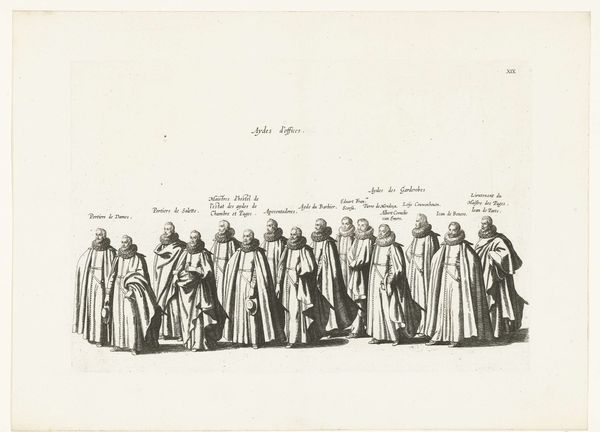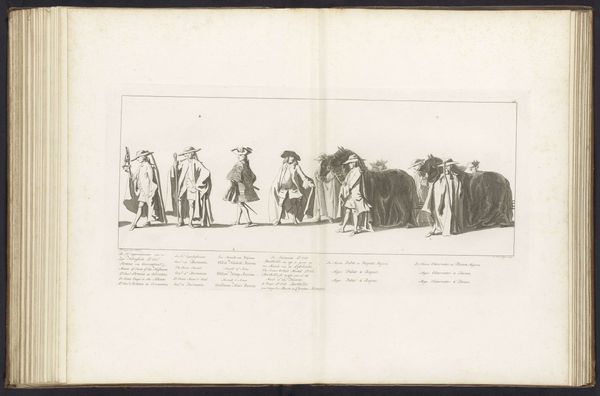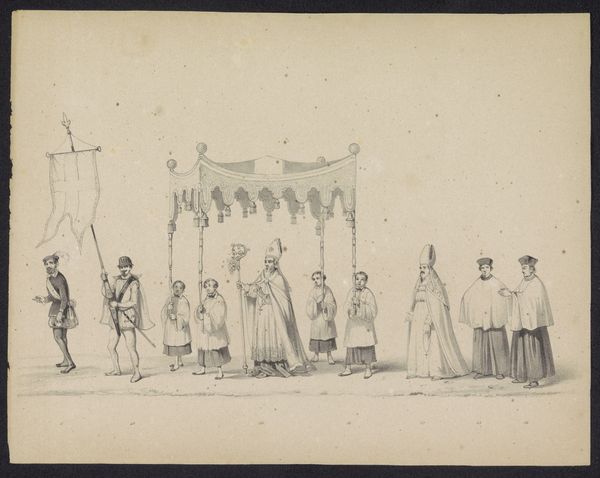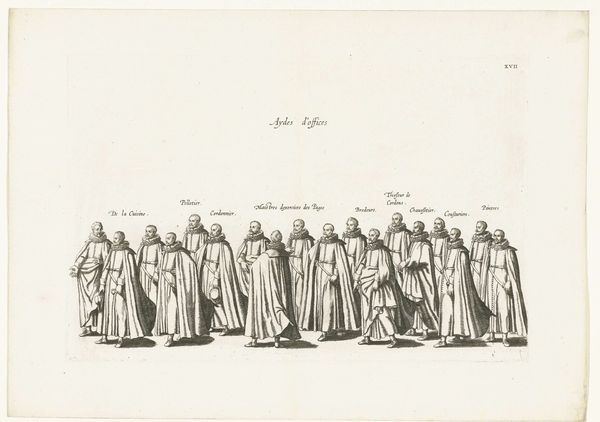
Maskerade door studenten van de Leidse Hogeschool, 1840 (plaat 13) 1840
0:00
0:00
jacobusludovicuscornet
Rijksmuseum
drawing, pencil
#
portrait
#
drawing
#
pen illustration
#
pencil sketch
#
pencil
#
pencil work
#
genre-painting
#
academic-art
Dimensions: height 232 mm, width 340 mm
Copyright: Rijks Museum: Open Domain
Curator: This pencil drawing, titled "Maskerade door studenten van de Leidse Hogeschool, 1840 (plaat 13)" by Jacobus Ludovicus Cornet, presents us with an intriguing scene of figures in costume. I am immediately struck by its somewhat solemn air. The uniformity of the dress and muted palette lends a gravity to the subjects that somewhat undercuts the idea of "masquerade." What do you think? Editor: That sense of gravity you're picking up could also stem from who these figures actually *are*, according to the title—Leiden University students. We see this procession, arrayed nearly identically in garb, rendered in the clean lines and almost severe simplicity of academic art from this period. What is being "masked" here, I wonder? Curator: Excellent question! One might approach it from the point of view of sartorial semiotics. Consider the lines of their robes and cloaks—the play of light and shadow, and the repeated shapes of the hats, evoke a particular moment in Neoclassical drawing, while simultaneously concealing—or masking—individual expression behind the theatrical costumes. Editor: Right, exactly. And thinking about it through an activist lens, one cannot overlook how this display underscores the elitism of 19th-century Dutch academia. It subtly excludes, creating an "us versus them" dynamic that masks deeper social inequities. Who was allowed to perform such masquerades, and who was left watching? Curator: I find that the drawing’s careful rendering allows the subjects to blend. Cornet carefully balances line and form to produce this measured, classical effect that aligns to form the same silhouette in most subjects. Editor: Yet even within that structural arrangement, the details betray certain realities. Observe how class and possibly even religious order, are on display: some figures hold rosaries or books, speaking to potential monastic parodies, or alluding to established positions of religious influence or academic stature that can only mask, never fully erase social difference. Curator: Ultimately, it’s the drawing's inherent tension—the surface performance versus underlying societal dynamics—that invites further, deeper examination. I found your reading especially powerful. Editor: And to consider how even what is hidden plays into understanding how institutions present themselves. Thank you.
Comments
No comments
Be the first to comment and join the conversation on the ultimate creative platform.
